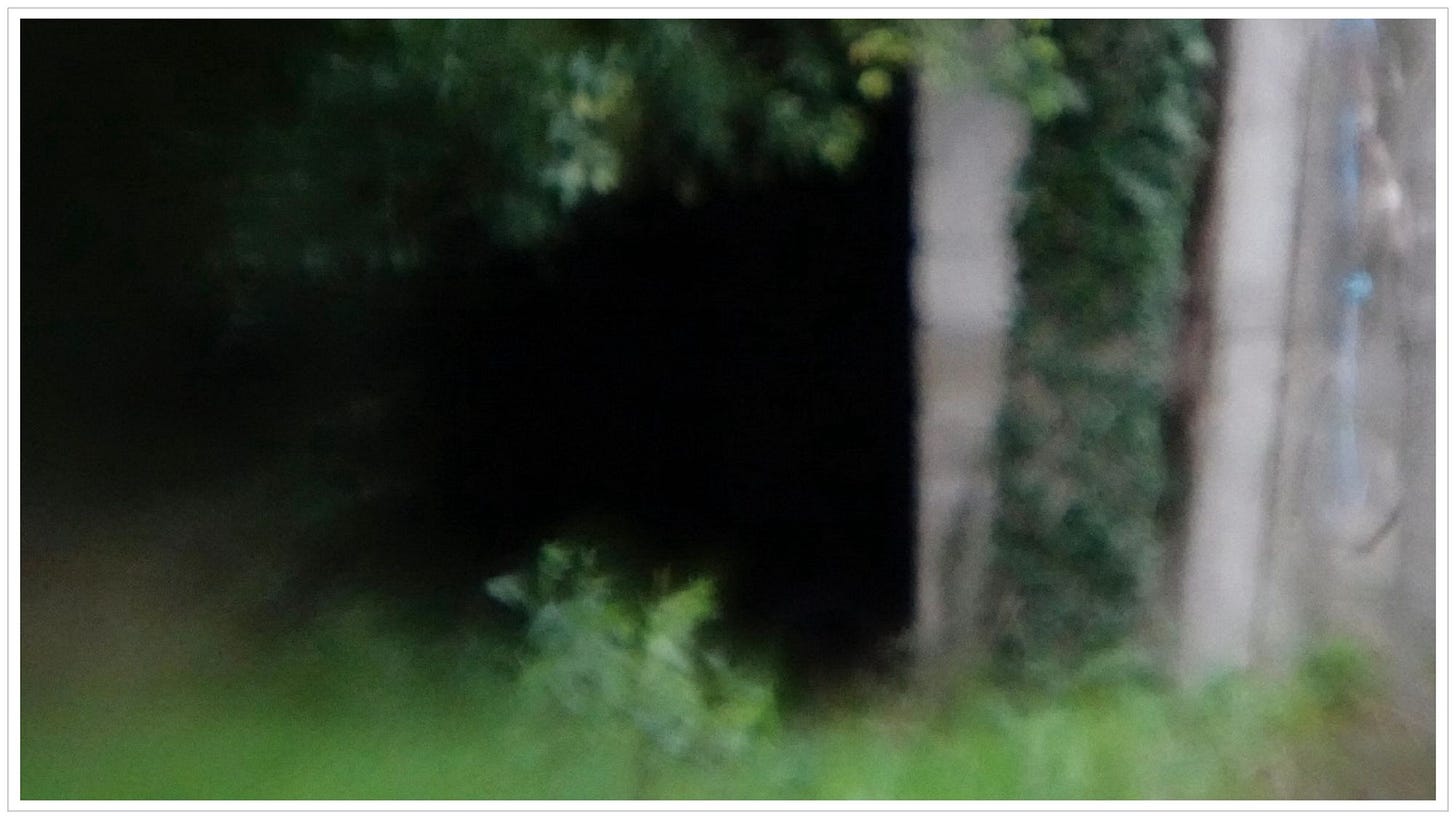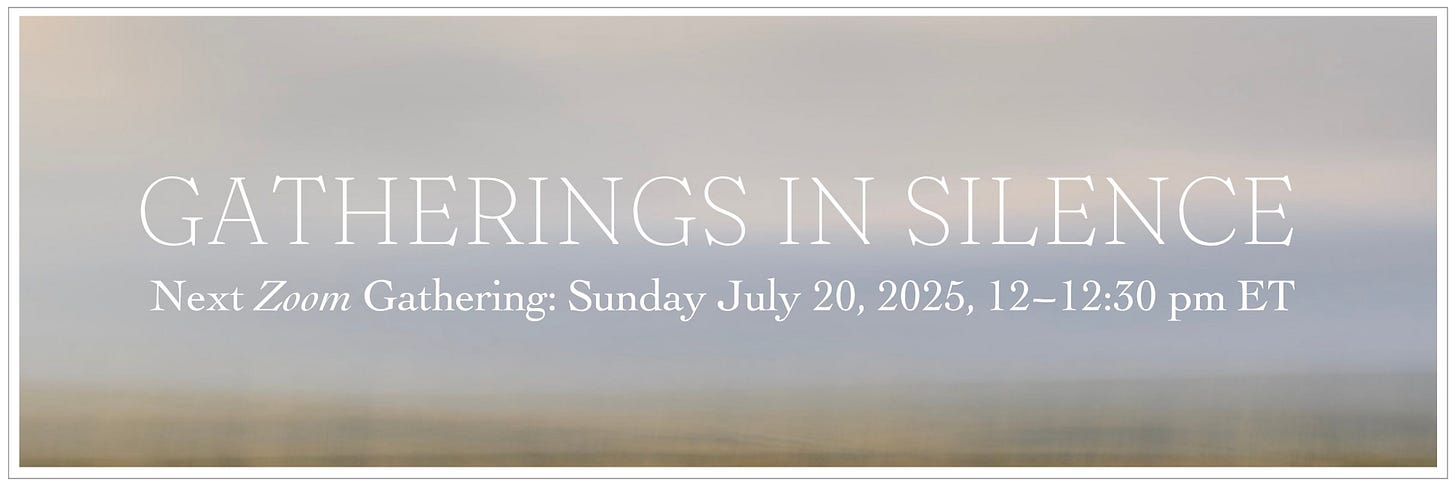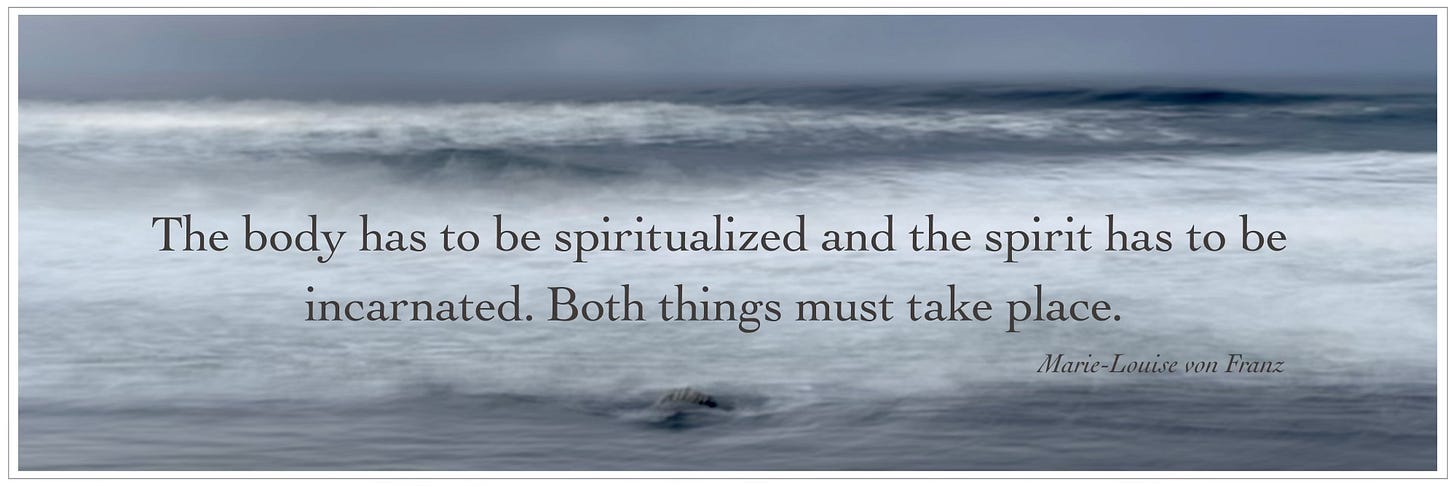Matter of the Heart – Part II
"It all begins where no light falls."
Dear Friends,
As we begin anew our series on the heart started in April, I wish to offer some orienting reflections as to why this series and why now, which I hope these introductory words evoke.
First, always echoing as an impulse for each of these letters and essays are the following insights from visionary cultural historian and ecotheologian, Thomas Berry:
. . . the origin moment of the universe presents us with an amazing process that we begin to appreciate as a mystery unfolding through the ages.1
. . .
The Great Work now . . . is to carry out the transition from a period of human devastation of the Earth to a period where humans would be present to the planet in a mutually beneficial manner.2
Thomas understood that the “epic of evolution” is a sacred story. “It is our way of dealing with the ultimate mystery whence all things come into being” and unfold.3 The “sacred journey of the universe” is the ever-unfolding context in which the structures and faculties of our own being emerge out of the wild depths of living Earth.4 We are “quintessentially integral” with the unfolding of the universe.5 As such, we are endowed with a responsibility to our human role as that mode of being in which the universe reflects upon itself.6 As this series unfolds, I hope to reveal the soul as that faculty of reflection and the human heart as the structure most endowed with this faculty.
Second, for nearly a decade, as many of you know, I have been a fervent pupil of the twentieth-century Swiss philosopher, Jean Gebser. Imminently concerned about the “crisis of the world and [humankind] such as has occurred previously only during pivotal junctures,” Gebser wrote a hefty tome during and in the years following World War II, entitled The Ever-Present Origin.7
In the opening comments of the book, Gebser offers this:
By returning to the very sources of human development as we observe all of the structures of consciousness, and moving from there toward our present day and our contemporary situation and consciousness, we can not only discover the past and the present moment of our existence but also gain a view into the future which reveals the traits of a new reality amidst the decline of our age.8
Gebser was convinced that to become vessels of the emergent mode of being, a mode coming into expression awaiting our presence to it, is to unforget whole-bodied where we have been. The essential attributes of an emerging mode of consciousness are present in earlier modes.9 The spiritualization of the human is the incarnation of our primordial depths.
The trouble with Gebser’s writings for many is the discursive density. Ever-Present Origin is a strenuous read. And yet, the more I sit with it, the more prescient it seems and the more I endeavor to bring this body of work home to the lived body of you and me, beginning with the beginning or as close to the beginning as we can imagine.
Third, the question arises about how to bring this body of work into the lived body. How do we synthesize ideas and insights into living logos? It seems to me we wend our way inward. We become the word, recognizing that every word is an embodied gesture lived between us, whether by listening with the eyes or speaking with the hands.10 Every word is the drumbeat of a story. We are the story, a mystery unfolding through the ages. It lives in our breath. It pulses the drumbeat of the heart. We have simply to rest in the body of our being and let reality impress upon us—wholly, completely.
What follows is a storied meditation. We begin to reconfigure what we take for granted about the human heart by returning to the very sources of human development. We are following traces of a genealogy, breadcrumbs on the trail of human becoming, each word a breadcrumb we stride toward, reach for, take inside, metabolize, reflect on, make meaning of. This is writing and reading as living logos.
Today’s meditation is about you and me before the birth of the soul. It will not look like it has anything to do with the human heart. That comes later. Today, we walk through time before words as we know words, a time of embodied acts and utterances of being in the world, as the world. This will lead us to the heart.
If you go slowly, the words will walk in your bones.
With love, dear Friends,
Renée
The Matter of the Heart – Part II
It all begins where no light falls.11
A band of four hunters, three men and one woman, descends the labyrinthine entrails of Earth until they reach another world, the belly of this world, what today we would call a cave. There, they set about making fire from sticks they carried by the armful and flint from stone. Where there is fire, there is light. With ash from the embers and clay from the floor, they paint an ox on the wall of this world they came to.
To these early humans, the ox they brought into being where before an ox had not been is the same ox they would soon hunt beneath the rays of the sun in the world they descended from.
And in making an ox and taking an ox, the human had power over it. Not before the hunt, not after, but as one sweeping motion free of all time, free from distinction.
To this early egoless human, every stick and every stone and clod of clay would become a way to make the world they came from, a world everywhere alive, this aliveness soon imbued with a numen, this numen a suffusive presence, this presence perceived as a power from which the early human would soon enough endeavor to be free.
The power of the presence was a power to possess, a sublime and shuddering secret wholly other to be subsumed.12 This was no fall of the human. It was the power of the presence meeting the innocent longing to embody it.
Imagine the inner aliveness of you—the you whom you do not know to be inclined to label as me—abiding whole with and as the aliveness of the world. The only difference between the two is a subtle but pervasive perception of a presence not (yet) in you.
In this mode, which we shall call the animist mode of being, this early human, still fused in unity with the world, experiences the world more so than sees it. For to see as we know seeing today is to parse subject and object, here and there.
To experience in this mode is whole-bodied through the vital faculties of being, as one being with the world, dreamlike absent dreaming. Consciousness is not yet in the human. Consciousness is still in the world, streaming toward the human like the sea washing onto shore. In this earliest mode of being, still alive but hidden in us, slumbering is the gestating soul, reflected womb-like in the world.
We step a little closer to you and me today. We come upon the human shuddering in awe and terror all at once, realizing that inside all that is aliveness comes the strange and voiceless visitor that today we call death, not so much in the hunt as in the human. It is nearly impossible for us to fathom—life taken by night in daylight is horror enough, but now too, there is this sudden strangeness we call death, streaming toward awareness, an awareness that yesterday was not there.
Every new perception is a border crossing, giving birth to a new reality. It is not unlike the appearance of the old woman in the unseen lines of the young maiden or the ears of the rabbit in the bill of a duck. What is newly perceived begins to flicker back and forth with what was once all that could be perceived until what is newly perceived is what takes up residence in awareness. Perceiving is never uprooted from its ground. It is never severed from the body of afferent and efferent streambeds of breath and blood and sinews pulsing the thruways of feeling not yet named. And so, what is newly perceived cannot be undone.
In the face of such absolute absence, the world tilted for the human. It quaked from inside. And the human dropped down on the ground prostrate with feeling.
The impulse was to follow death, to descend into the underworld where death goes and no light falls. To go to death entombed, dark as a moonless night, and without end.
But there was something more, something stranger still, a grandeur altogether be-stilling the human heart waking, drumming the pulse of nascent inward feeling, raw and full. From this place where death goes is that place from which all life springs forth and soon bears fruit. We see the human dropping a seed for the first time and soon seeing that it will grow.
Naturally, all eyes turned toward the sky—the night sky, endlessly dark, an abyss not unlike the underworld. It was Aristotle who in his search for the soul would later look back and say that the birth of the sky gave birth to the human soul.13 The early human had slipped into feeling an inwardness dawning. A new epoch was born, and with it the dawning of the human soul.
. . . to be continued.
Beyond the Comfort Zone slipped into the top 100 Rising Philosophy publications on Substack at #52 mid-June. This happened because of you! With gratitude for your support and to keep this lovely trend going so that Beyond the Comfort Zone reaches others, please enjoy this mid-year 50% off paid-subscription offer until July 31.
As always, thank you for all the ways you support Beyond the Comfort Zone.
Gatherings in Silence
Join us in the next sanctuary of Silence, Sunday, July 20, noon–12:30 pm ET, via Zoom.
Free and welcome to all. Please email me for the Zoom link: reneeeliphd [AT] gmail.
Inner-Life Work in the Spirit of Anam Cara
Offering 1:1 sessions, drawing from a deep well of presence in the spirit of Anam Cara.
Essays in this “Heart” Series
~ The Matter of the Heart – Part I
Notes & References
Berry, The Great Work: Our Way into the Future (New York: Bell Tower, 1999), p. 27.
Ibid. p. 3.
Ibid. p. 31.
Berry, Sacred Universe: Earth, Spirituality, and Religion in the Twenty-First Century, ed. Mary Evelyn Tucker (New York: Columbia University Press, 2009), pp. 122–123.
Berry, Great Work, p. 32.
I have posted this archival footage before. In it, Thomas speaks of the unique role and responsibility of the human in the journey of the universe.
Jean Gebser, Ever-Present Origin, trans. Noel Barstad and Algis Mickunas (Athens, OH: Ohio University Press, 1953). p. xxvii. Both Berry and Gebser were significantly influenced by the writings of paleontologist and Jesuit priest, Pierre Teilhard de Chardin.
Ibid. p. 4.
Gebser introduces The Ever-Present Origin as follows: “The present book is . . . the account of the nascence of a new world and a new consciousness. It is based not on ideas or speculations but on insights into mankind’s mutations from its primordial beginnings up to the present—on perhaps novel insights into the forms of consciousness manifest in the various epochs of mankind: insights into the powers behind their realization as manifest between origin and the present, and active in origin and the present. And as the origin before all time is the entirety of the very beginning, so too is the present the entirety of everything temporal and time-bound, including the effectual reality of all time phases: yesterday, today, tomorrow, and even the pre-temporal and timeless” (p. 1)
Robert Sardello, The Collected Notes of Integral Spiritual Psychology: Foundations for a Spirituality of the Future, vol. I—Foundations (Granbury, TX: Goldenstone Press, 2020), p. 15.
This “storied meditation” is a hermeneutic synthesis of Gebser’s archaic and magic structures of consciousness, which I have amalgamated here as animist mode, and Rudolf Otto’s explications of the experience of the numen; both writers indicate the archaic phenomenology of the numen as a presence, which gathers force as a perceived power. Gebser emphasizes that the struggle to possess this power has not ceded and is today an expression of the deficient magic structure. Gebser, Ever-Present Origin; Rudolf Otto, The Idea of the Holy: An Idea into the Non-rational Factor in the Idea of the Divine and Its Relation to the Rational, trans. John W. Harvey (London: Oxford University Press, 1952).
Gebser, Ever-Present Origin, p. 47. See also, Otto, Idea of the Holy, “shuddering secret,” p. 107.
Aristotle, de Anima, trans. R. D. Hicks (Cambridge: Cambridge University Press, 1907).









Renee. first, thanks so much for the eloquence and beauty you bring forth in describing the maturation and flowering of the ‘Matter of the Heart’.
Secondly, just finished reading the discourse between you and Kimberly on the ‘primordial spaciousness’ and ‘the noise of the ego’. And my breath became taken away recalling passages I read just yesterday from Pinkola-Estes book “Women Who Run With the Wolves” in the section ‘Homing: Returning to Oneself’.
So I quote: “So we see that the union of opposites between ego and soul produces something of infinite value, the spirit child. And it is true that even when the ego roughly intrudes upon the more subtle aspects of psyche and soul, a cross-fertilization takes place. “…the ego participates in making a child who will claim dual heritage, world and soul, one who will be able to carry messages and gifts back and forth between the two.”
Later Clarissa writes, “The spirit child is La Niña Milagrosa, a miracle child, who has the ability to hear the call, hear the far off voice that says it is time to come back, back to oneself….It is the child rising out of sleep, out of bed, out of the house, and out into the wind-filled night and down to the wild sea…”
Later still, “[The seal maiden] is forming the child, teaching it the terrain and the ways of the “other.” The soul is preparing the wildish child of the psyche for something very important.”
And lastly, “So it is a gift from the immense vitality of the psyche, then, that there is deep in the unconsciousness a caller, an old one who rises to the surface of our consciousness and begins to incessantly call us back to our true natures.”
Could the ‘primordial spaciousness’ be the same as our ‘true nature’ and the ‘spirit child’ the bridge back to this?
And I, too, have had such callings — a bodiless voice in the dark, the hand reaching out from under the covers grabbing my wrist, the ‘Green Woman’ rising from the black abyss right beneath my feet.
Affectionately, Mark.
In Truth & Reality IT all begins when for the first time in human history The Divine Conscious Light Incarnates in a living-feeling-breathing bodily human form, right down to the toes.
This reference describes His Illuminated Experience at birth
http://www.kneeoflistening.com/chapter-one/6
This reference describes our Real situation
http://www.consciousnessitself.org
http://beezone.com/current/authority_certainty_freedom2.html
Apart from that Narcissus rules to here:
http://beezone.com/narcissus.html
And his/her hell-deep fear of death
http://beezone.com/latest/death_message.html